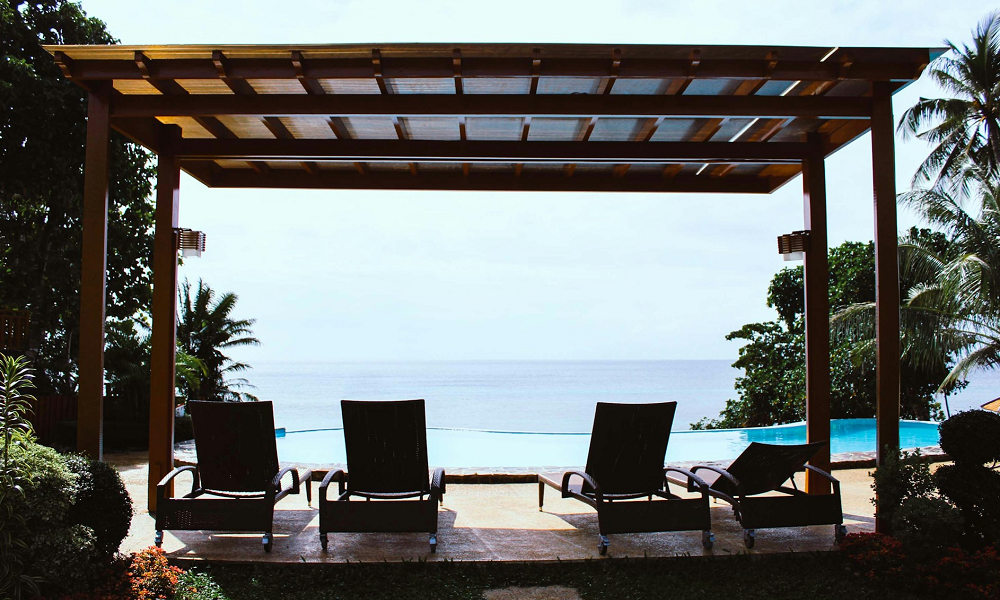Reviews
The Urban Outdoor Boom: Why Cities Are Investing in Green Roofs, Pergolas, and Backyard Retreats

Post-pandemic, cities had to face the music: people were over living like sardines in high-rises with no sunlight, no airflow, and no safe space to exhale. The outdoors wasn’t just a nice-to-have anymore—it became our collective sanity saver. Fast forward to now, and the urban landscape is undergoing a serious glow-up. We’re talking rooftop gardens, shaded parklets, and backyards that feel more like boutique resorts than utility zones.
Even the most stoic city planners are on board. They’ve realized that green roofs, pergolas, and open-air escapes aren’t just Instagram bait—they’re a legit fix for climate issues, mental health spirals, and social disconnect. And guess what? Homeowners aren’t far behind. They’re asking questions like what’s the best wood for pergola builds that don’t rot after the first storm, and how to turn a cramped patio into a functional slice of paradise.
Because let’s be real—if your city life doesn’t come with a little greenery and some shade, you’re probably doing it wrong.
Why Green Roofs Are the New Must-Have, Not Just a Flex
Green roofs aren’t just pretty—they’re practical. They cool buildings, reduce energy bills, and help cities fight the “heat island” effect, where concrete traps heat like an angry oven. Cities like Chicago and NYC have already made them part of the standard playbook. In fact, New York passed a law that basically says, “Hey, if you’re building something new, make that roof work for the planet.”
But it’s not just about environmental creds. Green roofs offer city dwellers a way to reconnect—with nature, with neighbors, and with a calmer version of themselves. They turn bland rooftops into something between a Zen garden and a social club. And when you layer in structures like pergolas for shade and ambiance, you’re looking at a whole new urban lifestyle.
The only catch? Materials matter. No one wants to drop cash on a setup that warps, molds, or falls apart in a year. That’s why knowing the best wood for pergola projects is more than a design choice—it’s a survival tactic for your outdoor upgrade.
The Rise of Backyard Retreats: Bougie? Maybe. Necessary? Definitely.
Backyards used to be for grilling and maybe a kiddie pool. Now? They’re becoming wellness zones, side hustles, and full-on family sanctuaries. You’ve got people building out daybeds, meditation decks, outdoor kitchens, and yes—those pergolas again. Add some string lights and you’re basically living in a Pinterest board.
But this isn’t just suburban energy creeping into cities. It’s a response to burnout, rising anxiety, and the need for space that doesn’t come with four walls and artificial lighting. Urban homeowners are dropping serious money on landscaping and hardscaping that would’ve been unheard of five years ago. Pergolas, in particular, are exploding in popularity because they offer structure without boxing you in.
That said, the structure better hold up. Whether you’re into rich-toned teak or low-maintenance cedar, choosing the right materials from the jump saves you from costly regret. That’s why the question of the best wood for pergola setups isn’t just trending—it’s essential.
City Governments Want In—And They’re Not Being Subtle About It
Public spaces are catching up fast. Cities like Austin and Portland are investing in shaded hangouts, community gardens, and green infrastructure that doubles as flood control. You’ll start seeing more pergolas in public parks, on school rooftops, and even integrated into emergency shelters designed for heatwaves and storms.
This isn’t charity—it’s strategy. These outdoor structures offer real ROI. They lower cooling costs, make cities more walkable, and attract residents who don’t want to feel like they live inside a concrete box. When you add equity into the mix—like bringing these features to underserved neighborhoods—it becomes even more urgent.
And for cash-strapped cities? Choosing materials that last longer and require less maintenance isn’t just smart—it’s mandatory. Knowing the specs behind the best wood for pergola construction means fewer headaches down the line.
The Bottom Line: Nature’s Not a Luxury Anymore
Urban outdoor spaces are no longer just an aesthetic perk. They’re infrastructure. They’re mental health tools. They’re climate resilience strategies in disguise. And whether you’re a homeowner figuring out how to squeeze a pergola into your patio or a city planner drafting the next zoning revamp, outdoor living is the new frontier.
Call it what you want—green, bougie, post-pandemic zen—but one thing’s clear: cities that invest in outdoor life are building something stronger than just nice views. They’re building communities that breathe.

-

 World1 week ago
World1 week agoEthiopian volcano erupts for first time in thousands of years
-

 Health2 days ago
Health2 days ago8 kittens die of H5N1 bird flu in the Netherlands
-

 Legal7 days ago
Legal7 days agoUtah Amber Alert: Jessika Francisco abducted by sex offender in Ogden
-

 US News6 days ago
US News6 days agoExplosion destroys home in Oakland, Maine; at least 1 injured
-

 Health7 days ago
Health7 days agoMexico’s September human bird flu case confirmed as H5N2
-

 Legal3 days ago
Legal3 days ago15 people shot, 4 killed, at birthday party in Stockton, California
-

 World7 days ago
World7 days agoWoman killed, man seriously injured in shark attack on Australia’s NSW coast
-

 Health6 days ago
Health6 days agoMarburg outbreak in Ethiopia rises to 12 cases and 8 deaths




